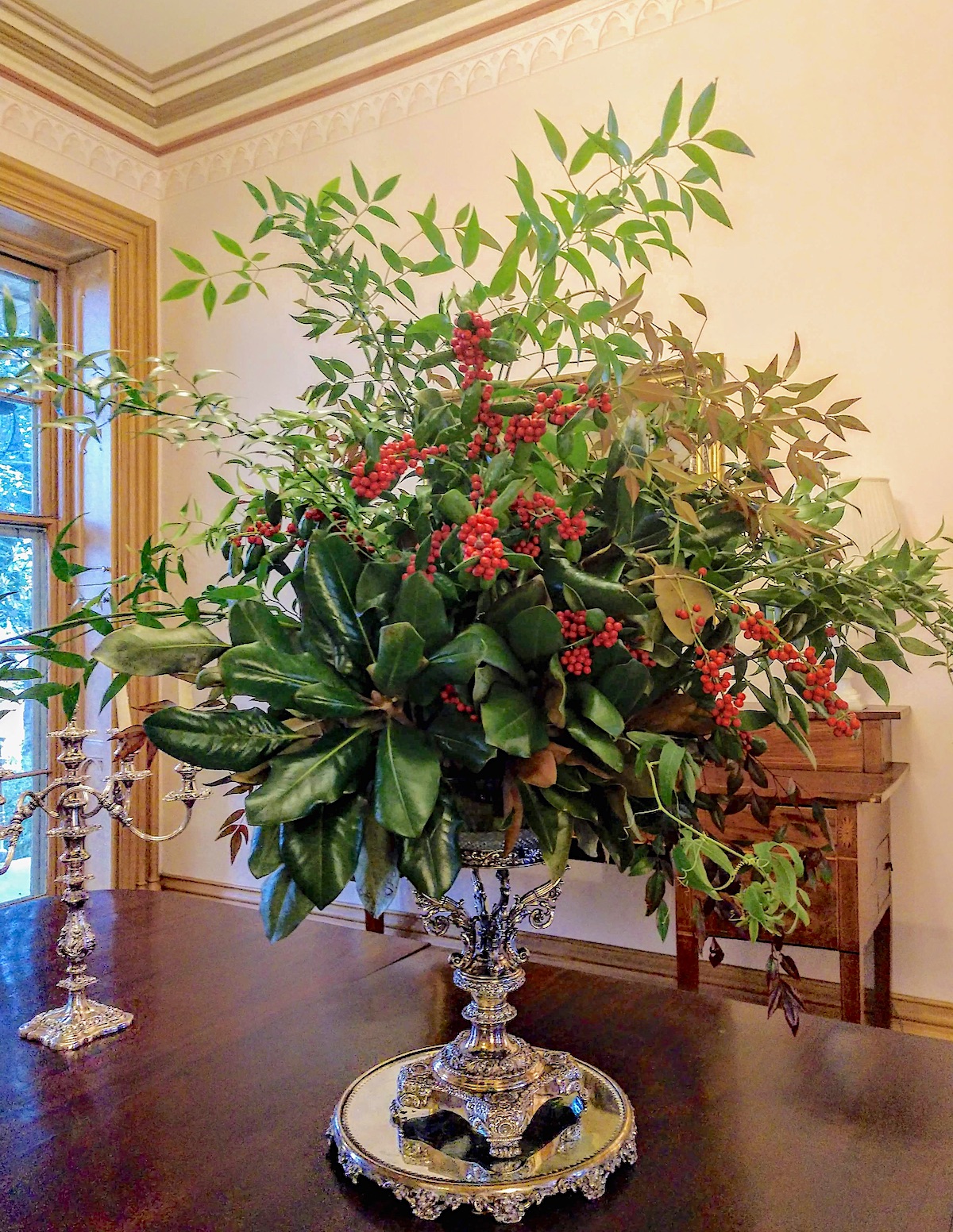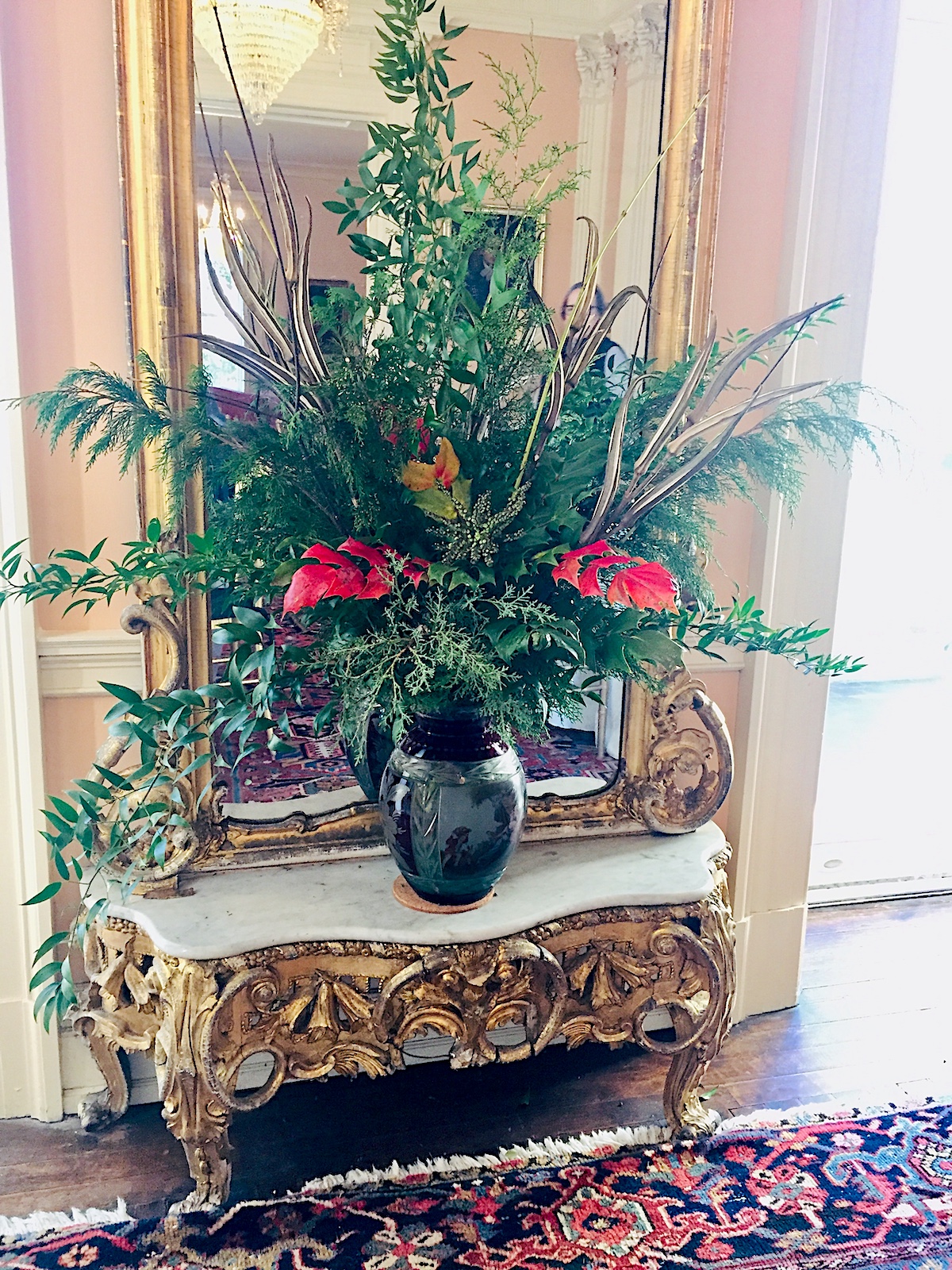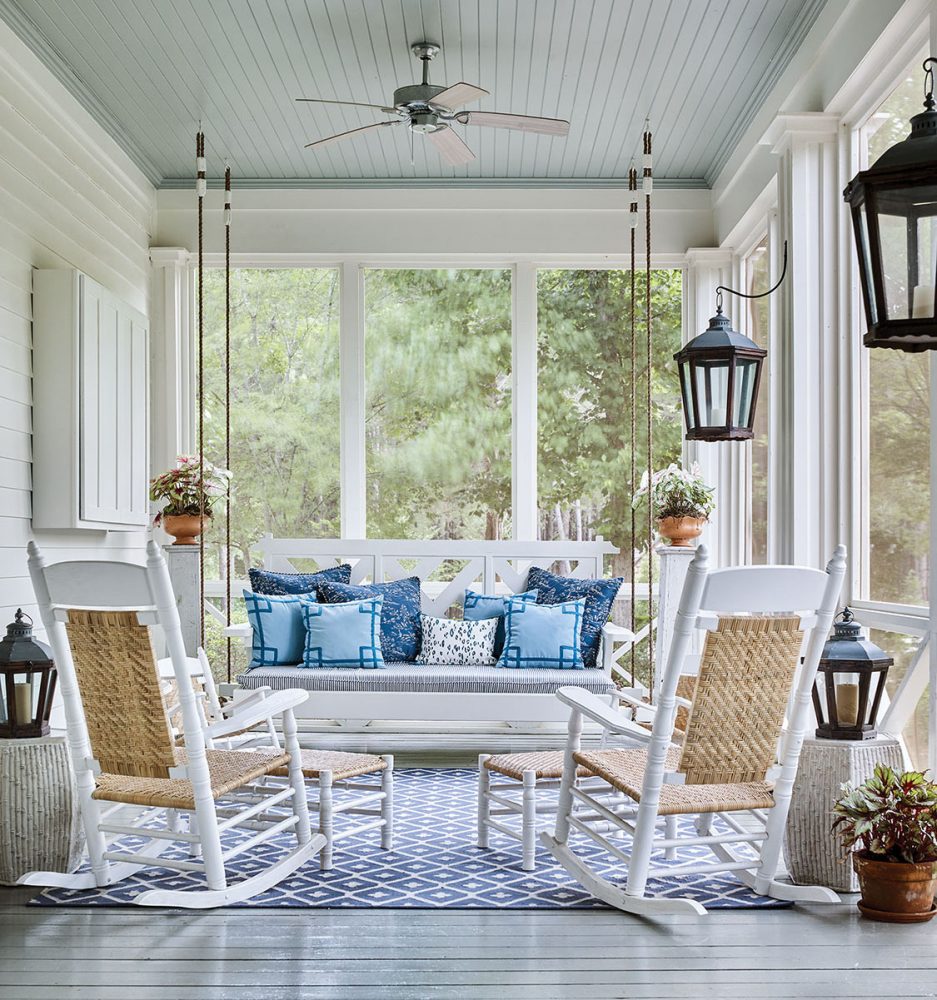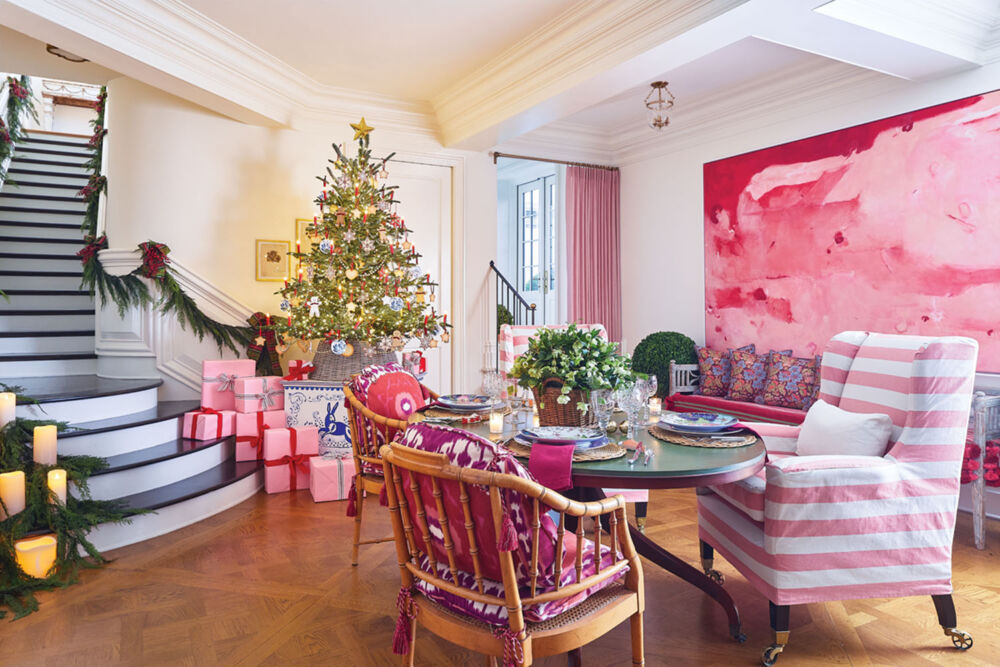
Nandina foliage, which turns bronze or red with a hard frost, and deep purple skip laurel berries add seasonal color, while variegated hypericum and Japanese cedar (Cryptomeria japonica) round out a design by Karen Cauthen Ellsworth. Find six tips for arranging with winter foliage at the end of this post.
Throughout the year, members who live nearby take turns decorating the house with seasonal arrangements, clipping from their own gardens or sometimes from their neighbors’. Some are award-winning floral designers, mentoring fellow members who are learning to create arrangements for the club’s signature event, Historic Garden Week, the nation’s oldest and largest house and garden tour. Others are honing their skills to compete in flower shows. Most just enjoy the camaraderie, knowing that what they learn along the way will help beautify their own homes.

A regal composition of nandina and holly foliage, holly berries, and magnolia branches graces the dining table at the Kent-Valentine House.
I sat down with Moonie Etherington, a knowledgeable plantswoman and member of the James River Garden Club (one of the Garden Club of Virginia’s 48 clubs), to learn the best tips and tricks for brightening interiors with fresh arrangements during the peak of winter.
6 TIPS FOR ARRANGING WITH WINTER FOLIAGE
Trim evergreens in your garden to tidy shrubs and bring them inside to make arrangements. They will last a lot longer than an arrangement that is mainly flowers—up to two weeks or even longer.
The leaves are much smaller than a traditional magnolia, making it easier to work with in an average-sized container.
The foliage is dependable, but the berries drop and can be a real mess. Instead, opt for winterberry for color, or stems from red and yellow twigged dogwood.
Depending on where you live, many herbs over-winter beautifully and can add an unexpected element to indoor arrangements. Variegated hypericum (St. John’s Wort) is a favorite. Try sprigs of rosemary or flat-leaf parsley for smaller designs.
You might not have flowers blooming, but rose hips, dried okra pods, branches of arborvitae with their tiny pinecones attached, and other unusual ornamentals add visual interest and variety.
Try a cluster of cut foliage of the same variety in a special container. Let the variegated leaves or unusual texture of your choice create instant impact. Arum Italicum is a three-season winner with arrow-shaped leaves.

With soaring ceilings, deep crown moldings, and three gilded pier mirrors on the ground floor, the house inspires artistic displays to match its grandeur. Here, red flashes of mahonia and spikes of dried okra add interest to a vase of nandina and juniper greenery.
By Karen Cauthen Ellsworth, Director of Historic Garden Week in Virginia | Photography courtesy of the Garden Club of Virginia




